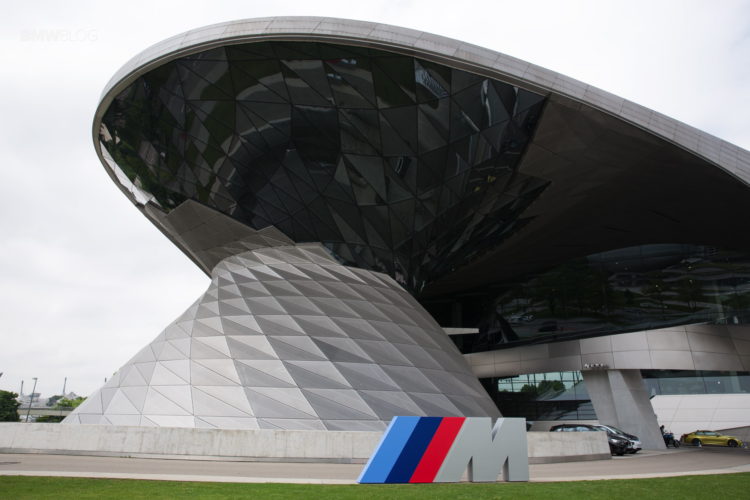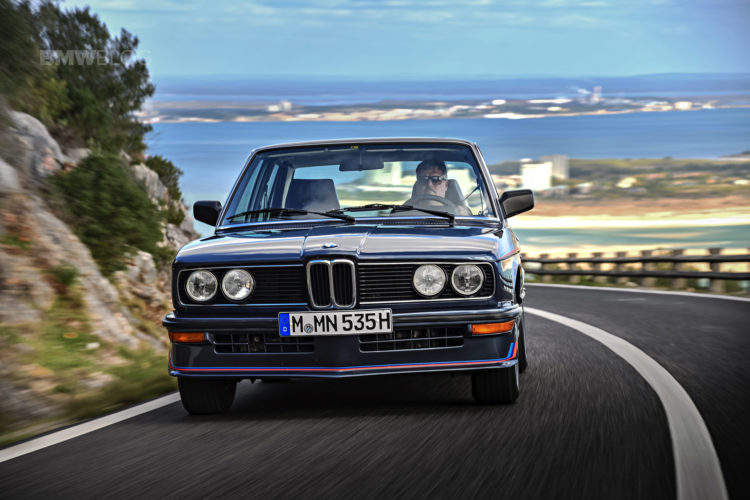Regular tires vs. run-flat tires…..what a heated discussion this has been in the past few years and one of the ongoing topics here at BMWBLOG. Clearly after 70 comments left, majority of you favor the regular tires with the ol’ good spare sitting in the trunk.
Or…attached to the trunk?
Our friend Kamil over at CarGuyDad spotted recently an….let’s just say for now, interesting MINI Cooper. Nothing out of ordinary until now, right? Wait, we’re not there yet. What really makes this MINI so special in the spare tire attached to its trunk. YES, you read it right, no typo this time.
Before we will give some a speech on the advantages of a run-flat tire and of course, the cons, let’s see what CarGuyDad had to say about this.
Another issue on many new cars, such as the Mini Cooper, is simply the lack of proper space for a spare-tire. That however clearly did not stop the owner of the above Mini Cooper S. Looking closely you will notice that the spare tire tilts down on a Jeep Wrangler-like-carrier/contraption to allow access to the tailgate. Problem solved! And in a classy way might I add, as the exterior spare tires gives Mini an even more retro look which is that of a car from 1920’s to the 1950’s. Bravo, Real [Short] Man of Genius from Massachusetts! Today We Salute You, Mr. “I have Nothing to Overcompensate for!”
Quite ingenious, huh? Or was it a simple protest to the lack of a spare tire as a standard feature?
Here are some disadvantages of using run-flat tires, cons that turn into pros of using a regular tire:
- The run-flat tires (RFT) can usually not be repaired in the case of a puncture, so instead of a simple puncture costing $20, you’ve got to replace the whole tire.
- RFTs can malfunction, defeating their intended purpose to begin with, or be damaged in such a way that getting the typical 150mi@50mph is no longer possible.
- Run-flats are more expensive to buy, more expensive to install and offer poorer performance.
- Lifespan is half of that of normal (even with regular monitor of pressures).
- Costs 50% more than normal tires on average.
- The ride is more uncomfortable, especially if you have 17″ upwards.
- Increase the running costs of ownership. Normally a tire lasts you a good average of 50,000 miles (80,000 km).
- Not all tire shops have RFT
- Unpleasant ownership as you always have to worry about getting a puncture and always hoping that the warning does not appear.
Reasons to use run-flat tires
- It is dangerous to stop on any road to change a tyre, especially on a motorway or at night.
- There is no need to have to wait for a breakdown service to arrive.
- Safety and security of the driver and passenger(s) is maintained.
- Alloy wheels are difficult to detach from steel hubs.
- On most cars the spare is under the contents of the boot, and uses boot space.
- It can be tricky to line up the wheel bolt holes with the hub screw holes and match the thread.
- The dirty punctured tyre needs to be removed and stored in the boot.
- Another puncture before the punctured tyre is mended means one is stranded.
- A driver can continue for 150 miles at 50mph with a punctured Run-flat tyre.




































































